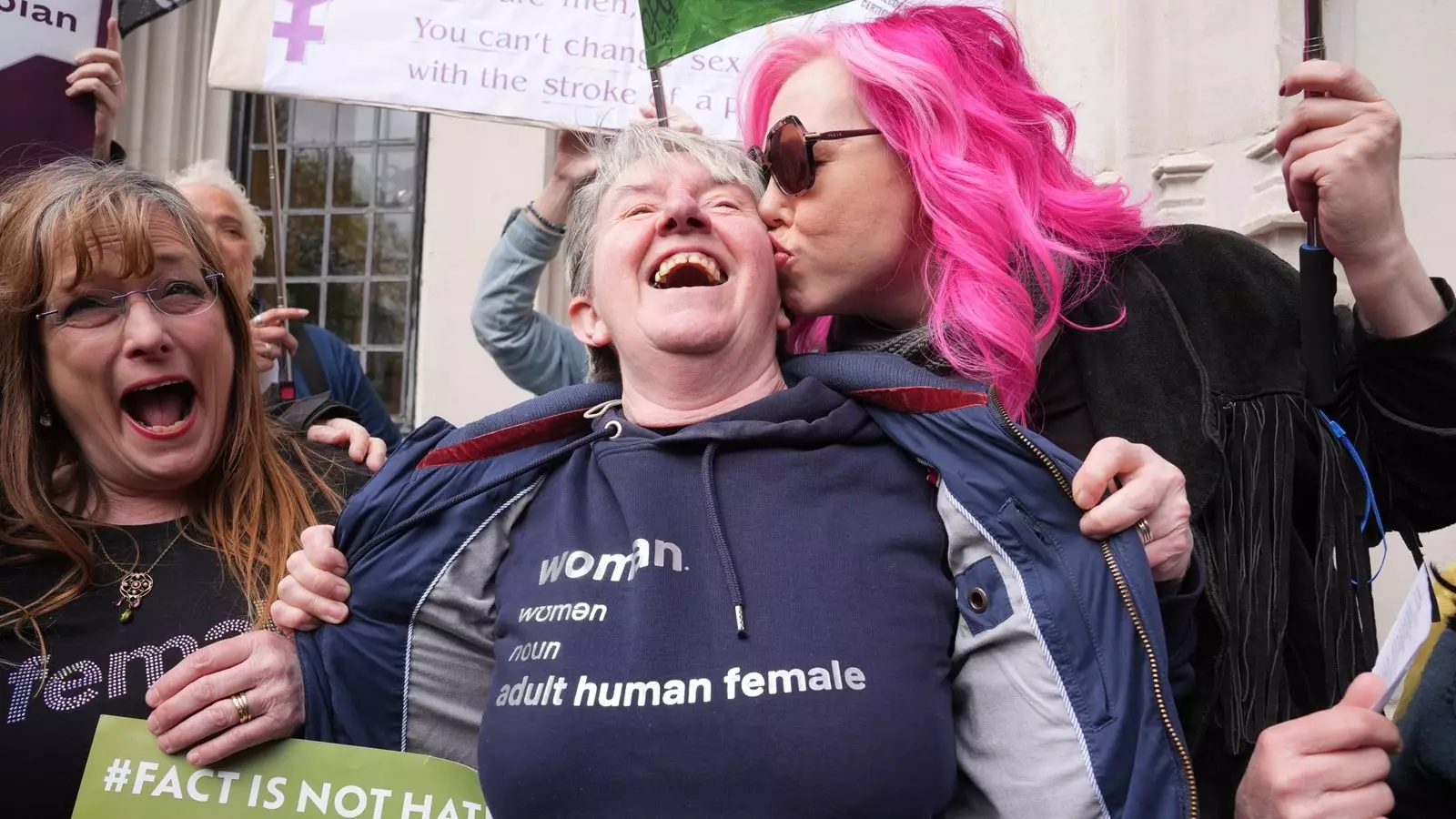For far too long, discussions surrounding gender identity and biological sex in the UK have escalated into a toxic battleground, steeped in emotional rhetoric and polarizing viewpoints. As of this week, a monumental ruling from the UK’s highest civil court has cast a long shadow over the nation’s understanding of gender, with far-reaching implications for individuals and institutions alike. The judges’ unanimous decision that defines legal womanhood exclusively through the lens of biological sex is not just a legal win for some; it’s also a profound loss for many trans individuals who have fought valiantly for their recognition and rights.
The legal landscape surrounding gender identity in the UK has been tumultuous, particularly focusing on the Equality Act of 2010 and the Gender Recognition Act of 2004. At the heart of the matter is the tension between the rights of trans individuals, often encapsulated in the possession of a Gender Recognition Certificate (GRC), and the preservation of single-sex spaces for biological women. This ruling fundamentally sidelined the recognition of trans women in contexts where their presence had become a highly charged topic due to ongoing societal shifts.
The Implications of the Ruling
The ruling claims to uphold clarity, but what it has fundamentally done is strip away the nuanced understanding of gender that many advocates believe is essential for a just society. Trans women, who have lived authentically as women, are now left to grapple with a judicial pronouncement that declares them legally invisible. While proponents of the ruling may argue that protection against discrimination for trans individuals remains intact, the emotional and psychological ramifications are undeniable. Advocates from the trans community have expressed that this decision does not simply invalidate their legal status; it threatens their identity and existence as they navigate a society that has, until this point, been largely conducive to acknowledging their lived experiences.
One need only observe the divide in responses to the verdict. Campaigns like For Women Scotland celebrated the decision, relishing the sense of victory and clarity that it provided for those advocating for boundaries in women-only spaces. Yet, this so-called clarity comes at a staggering cost—the marginalization of a group that is already beleaguered by discrimination and misunderstanding. How can a legal decision that purportedly aims for fairness be embraced when it exacerbates existing inequalities?
The Political Landscape: A Shifting Tide
On the political front, the ruling has reignited tensions among lawmakers and party leaders. Labour’s Sir Keir Starmer framed the decision as one fostering “confidence” in single-sex spaces, aligning his party’s stance with the ruling but raising questions about inclusivity for all women, particularly those who identify as trans. In stark contrast, Scotland’s current leadership, represented by John Swinney, appears to be tiptoeing around the implications, already weary from the tumultuous debates that previously embroiled his predecessors. This reluctance to engage substantively with gender politics signals a practical recognition that contemporary discussions are fraught with peril and potential backlash among constituents.
One must also consider the harsh reality of political capital. With the looming specter of the Holyrood elections, the prevailing sentiment suggests that the topic of gender reform may have reached a point of no return for many politicians, who now fear the backlash of public opinion. The questioning of biological sex and gender identity poses a minefield, and many are willing to sidestep meaningful reform rather than risk significant political fallout.
A Deeply Personal Issue
Beyond the political machinations and legal stipulations, the essence of this debate is deeply personal. Each individual affected by this ruling carries with them a story, a struggle, and a journey for recognition and acceptance. The experiences of trans individuals, who have fought for the simple right to be seen as they are, are pushed aside in favor of legal definitions that feel increasingly outdated in an evolving society. Those passionate about civil rights must confront the painful reality that legislation crafted to protect one group may simultaneously endanger another.
In this atmosphere of contention, it becomes imperative to scrutinize not only the decisions made by legal authorities but also the enduring societal narratives surrounding gender and identity. A documented legal definition cannot encompass the vibrant diversity of human experience, nor should it strip anyone of their identity or potential. Rather than “clarity,” this ruling offers a grim portrait of a society ill-equipped to engage with an increasingly complex understanding of gender and identity, and it raises disturbing questions about who gets to define what it means to be a woman in a world that should ideally embrace all facets of identity.

